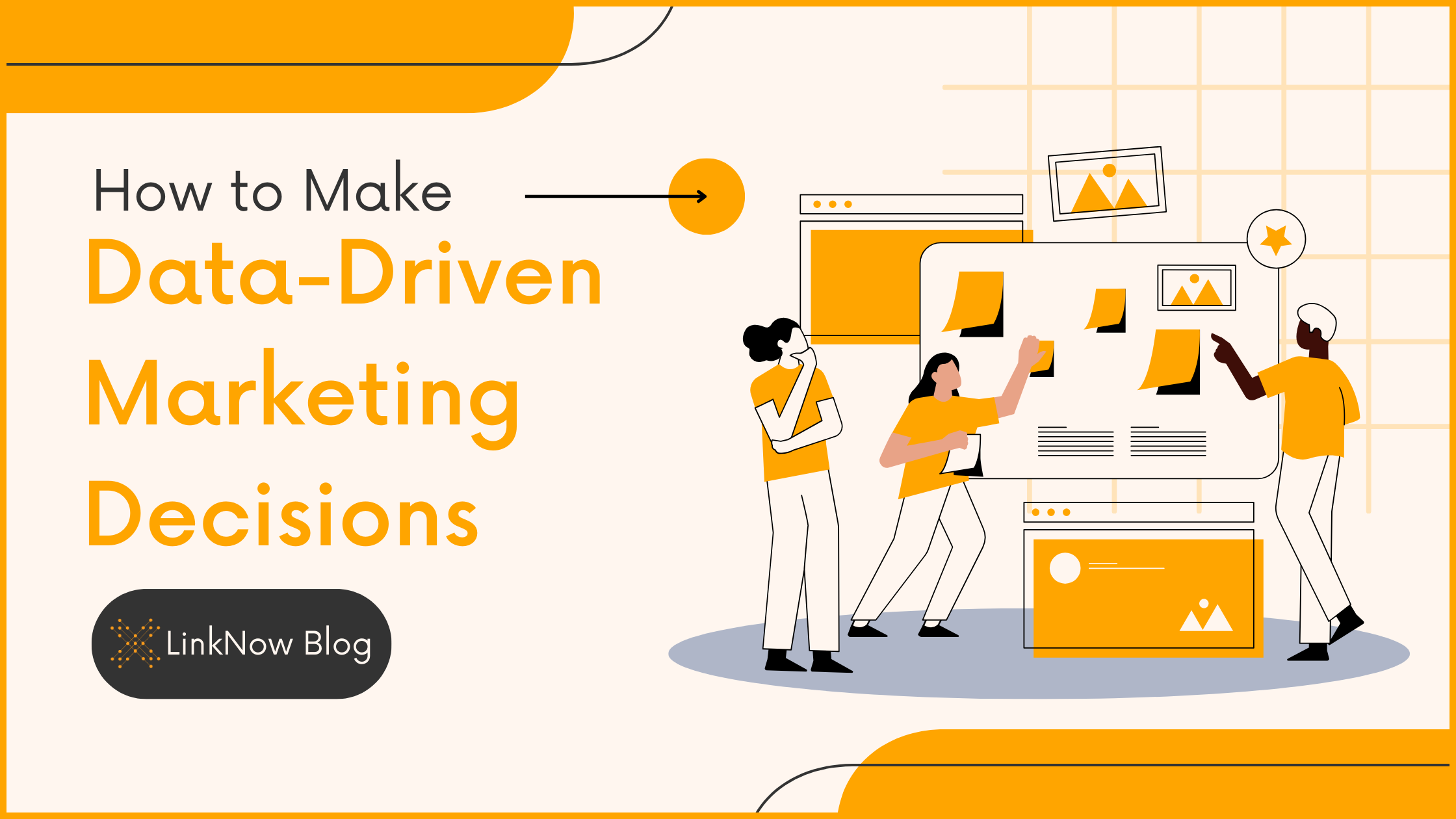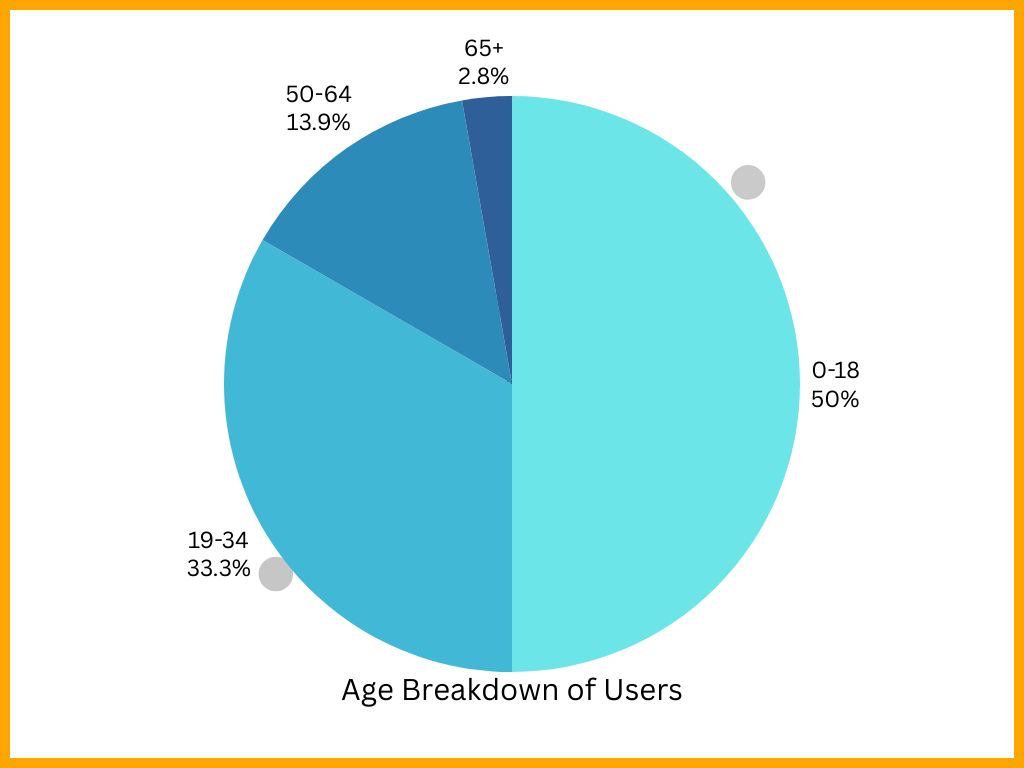
Imagine you’re launching a new product in the days before digital data existed. What information do you have available? You rely on gut feeling, customer surveys, and maybe a few focus groups to predict which audience will respond. With these tools, you might create a campaign that feels right, but you’d have no way to know for sure until the results come in—if they come in at all.
Fast forward to the present. You’re faced with the same product launch, but instead of intuition, you have access to real-time data: keyword searches, website traffic patterns, audience demographics, and predictive algorithms that suggest optimal timing and content.
Which scenario would you choose to make more informed, effective decisions? In this blog, you’ll see how you don’t have to eliminate intuitive marketing completely, but how data supports and enhances it.
Why Does Data Matter in Digital Marketing?
Let’s start with a definition of marketing campaign success: It isn’t just about getting your message out—it’s about consistently reaching the right audience, driving engagement, and converting leads into customers.
Without data, measuring these outcomes is nearly impossible. It’s like taking a road trip without a map. You’re moving in a direction, but no idea if it’s the right one. Data allows you to define clear goals, track performance, and make informed adjustments to your campaign to drive the results you need.
What Marketing Challenges Can Data Help You Overcome?
There are myriad ways you can use the data you collect from different sources. One of them, and the most important, is solutions to marketing issues like brand dilution, customer, churn, and more.
Think of all the possibilities with these examples:
- Email Campaigns with Low Open Rates
Issue: Your email marketing campaigns have consistently low open rates despite having a large subscriber list.
Data-Driven Solution: Analyze email performance data to identify which subject lines and send times perform best. Use A/B testing to experiment with new subject lines and timing, and segment your audience based on their engagement patterns to create more targeted, personalized emails.
- High Website Bounce Rate
Issue: Visitors are leaving your website shortly after landing on it, indicating they aren’t finding the content or design engaging.
Data-Driven Solution: Use heatmaps and session recordings to understand how users are interacting with the page. Analyze bounce rates for different pages and adjust content, layout, or CTAs based on what’s working on higher-performing pages.
- Paid Ads with Low Conversion Rates
Issue: Your Google Ads or Facebook Ads are getting clicks, but the conversion rates are much lower than expected.
Data-Driven Solution: Review data on ad performance to identify patterns in audience demographics, geographic locations, and devices. Refine targeting by focusing on the best-performing segments and use A/B testing to experiment with new ad copy, images, and landing pages.
How to Make Better Decisions With Data-Driven Marketing Insights
You can collect an exorbitant amount of data, but if you aren’t using it effectively, what’s it worth? The key is turning that data into actionable insights.
Start by identifying your specific marketing goals—whether it’s increasing traffic, improving conversions, or boosting engagement—and use the data to pinpoint where your current efforts are falling short.
Next, prioritize the most relevant metrics and trends. Not all data is equally useful, so focus on the insights that directly impact your strategy.
Here’s what this process should look like, with a few tweaks here and there for your needs and goals:
- Clearly define your goals: Establish specific, measurable objectives (e.g., increase organic traffic by 20% in 3 months) to ensure your data collection is focused and relevant.
- Collect the right data: Use the appropriate tools (Google Analytics, SEMrush, etc.) to gather data that aligns with your goals, such as keyword performance or user behavior metrics.
- Analyze the data for insights: Look for patterns, trends, and outliers in your data. Identify which areas of your strategy need improvement and what actions drive success.
- Prioritize and make data-driven adjustments: Focus on the insights that have the biggest potential impact on your objectives and implement changes based on what the data reveals.
- Monitor and refine: Continuously track performance after implementing changes, and refine your strategy based on ongoing data analysis to ensure long-term success.
How to Organize Your Marketing Data
Part of being data literate is knowing how to read the data you collect. Again, it’s not worth much if you aren’t increasing efficiency. To simplify data interpretation, you need to organize it. You have options, and it depends on the type and volume of data you're working with.
Smaller datasets can often be managed with simple tools like spreadsheets, while larger, more complex data may require dedicated platforms like Google Analytics or customer relationship management (CRM) systems. These should be accessible to anyone on your team involved in marketing.
Categorizing your data is key to making it manageable. Group similar metrics together, such as website traffic, social media engagement, and conversion rates. This helps you see trends and correlations clearly. Creating dashboards visually representing your data can also help simplify the analysis process.
Leveraging Keyword Data for Optimized Content Creation
Keywords are the foundation of effective SEO and content strategy. They guide what your audience is searching for and provide insights into their needs and preferences. By analyzing keyword data, you can identify high-traffic terms and long-tail phrases that align with your content goals.
To find keyword data, use tools like Google Keyword Planner, Ahrefs, or SEMrush. These platforms allow you to identify popular search terms, analyze search volume, and track competition for each keyword. You’ll see an SERP overview for keywords, traffic potential, global search volume, and more.
Once you have your data, use it strategically in your content. Incorporate relevant keywords into your titles, headings, meta descriptions, and body text, but make sure they flow naturally. Focus on user intent by creating content that answers specific questions or solves problems related to the keywords.
The Role of A/B Testing in Data-Driven Marketing Decisions
A/B testing in marketing is the process of comparing two versions of a campaign element—like an ad, landing page, or email—to see which one performs better. By randomly showing different versions (A and B) to segments of your audience, you can gather data on which version performs better.
Start by selecting a single element to test, such as a headline or CTA. Create two versions (A and B), then split your audience into two groups, each seeing one version. Use your analytics tools to track key metrics like clicks, conversions, or open rates (for emails).
For instance, you might test how “Now” or “Today” performs for your CTA’s. Or you could test two different subject lines to determine which generates a higher open rate. Aim for a higher sample size for more statistical significance so you know your data is giving good information.
Using SEO Metrics to Measure Campaign Success
Using various SEO metrics can help you measure the success of your digital marketing campaigns. Key metrics like organic traffic, keyword rankings, and click-through rates (CTR) give you a window into how well your content is performing, which you can use to make changes or timely updates.
Here’s how you can leverage a few of them:
- •Organic traffic: Tracking organic traffic helps you assess the visibility of your website and whether your SEO efforts are driving more users to your site.
- •Keyword Rankings: Monitoring keyword rankings allows you to see how well your content is performing for specific search terms.
- •Click-through rate (CTR): A low CTR indicates that while your site appears in search results, it’s not enticing enough to get clicks.
- •Bounce rate: A high bounce rate suggests users aren't finding your content relevant. This metric can inform changes to your content, design, or UX.
- •Conversion rate: The ultimate measure of success, tracking conversion rates lets you know how well your site is turning visitors into customers or leads.
Improve Your Target Audience Analysis
Data helps you understand your audience. When you analyze demographic information, user behavior, and engagement patterns, you learn about who is interacting with your content and products.
Tools like Google Analytics and social media insights allow you to segment your audience by age, location, interests, and more so that your messaging aligns with the people most likely to convert.
Once you know your audience, data helps you target them more effectively. You can do this through any of the mentioned methods and ensure your marketing reaches the right people at the right time.
Leveraging AI in Data Collection and Interpretation for Marketing
The whole point of collecting data for your marketing efforts is to gain insights faster and more effectively, which is exactly what AI is for. In some cases, these tools can automate the process of tracking customer behavior, analyzing website interactions, and collecting data from various platforms.
One of the main benefits is AI’s ability to reveal patterns and insights that you might otherwise miss; here are a few ways you can use it:
- •Audience segmentation: AI can analyze demographic and behavioral data to group your audience into more specific, actionable segments for targeted campaigns.
- •Predictive analytics: Use AI to forecast customer behavior and trends, helping you anticipate needs and optimize your marketing strategies accordingly.
- •Customer sentiment analysis: AI can analyze social media, reviews, and feedback to gauge customer sentiment, allowing you to adjust messaging and improve brand perception.
- •Campaign performance optimization: AI tools can analyze data from past campaigns to identify which tactics perform best, recommending optimizations for future campaigns.
Quick caveat: AI can’t do all your analysis for you. While AI can efficiently process large amounts of data and highlight patterns or trends, it still requires human oversight to interpret those insights correctly. And, of course, AI isn’t perfect. You need to fact-check and duplicate results to verify them.
Consider also that AI doesn’t fully understand the nuances of certain markets or customer behaviors, so an approach that combines AI analysis with human intuition is best.
We Use Data-Driven Insights to Optimize Digital Strategy
Gone are the days when you have nothing but a lucky guess to guide your marketing efforts. With the precision of data-driven insights and expert marketing strategies, you can achieve meaningful results that align with your business goals.
Whether you’re looking to boost your SEO, refine your targeting, or improve campaign performance, the digital marketers at LinkNow Media can help. Let’s work together to turn your data into actionable success and take your marketing to the next level. Call 1.888.667.7186.


